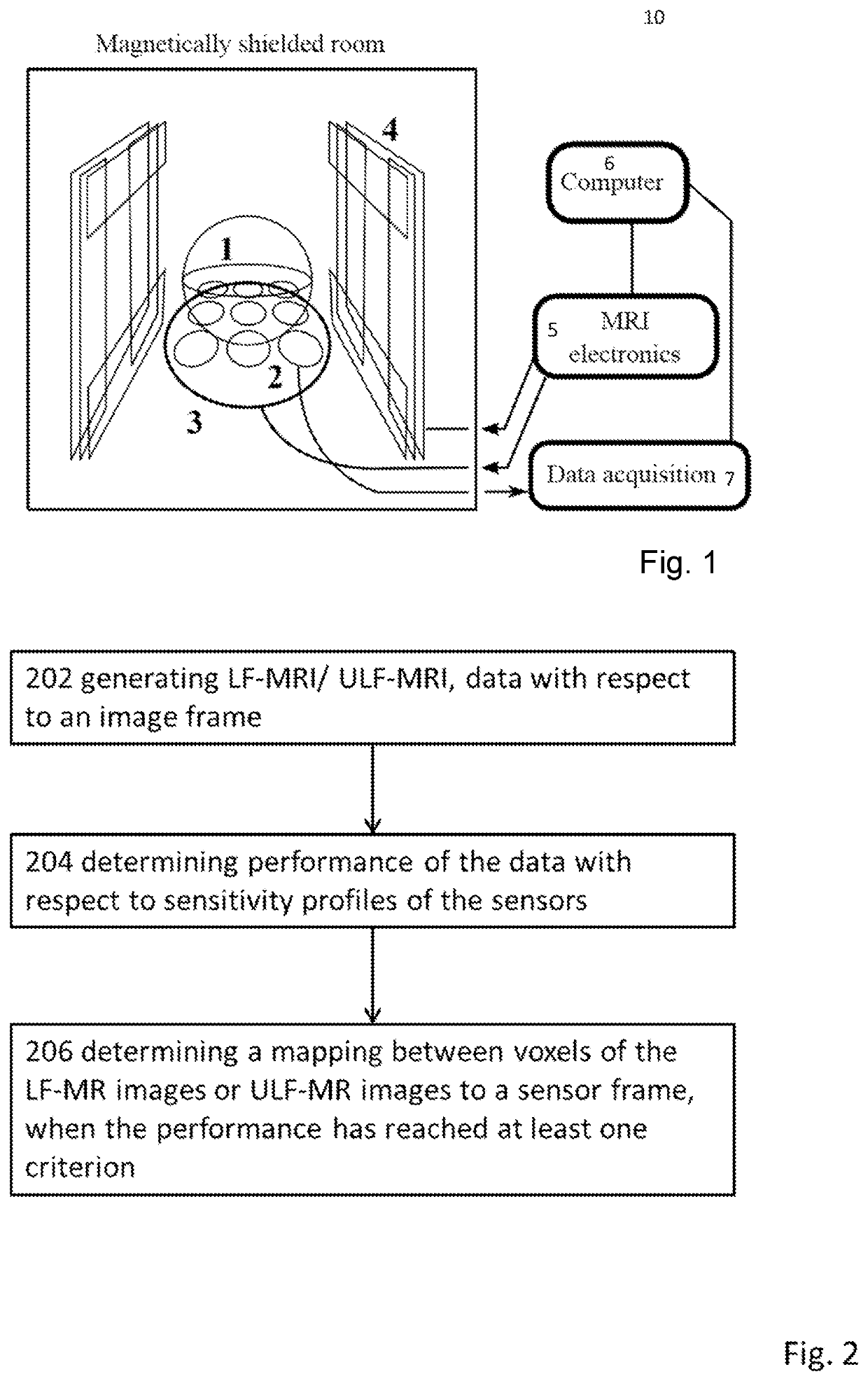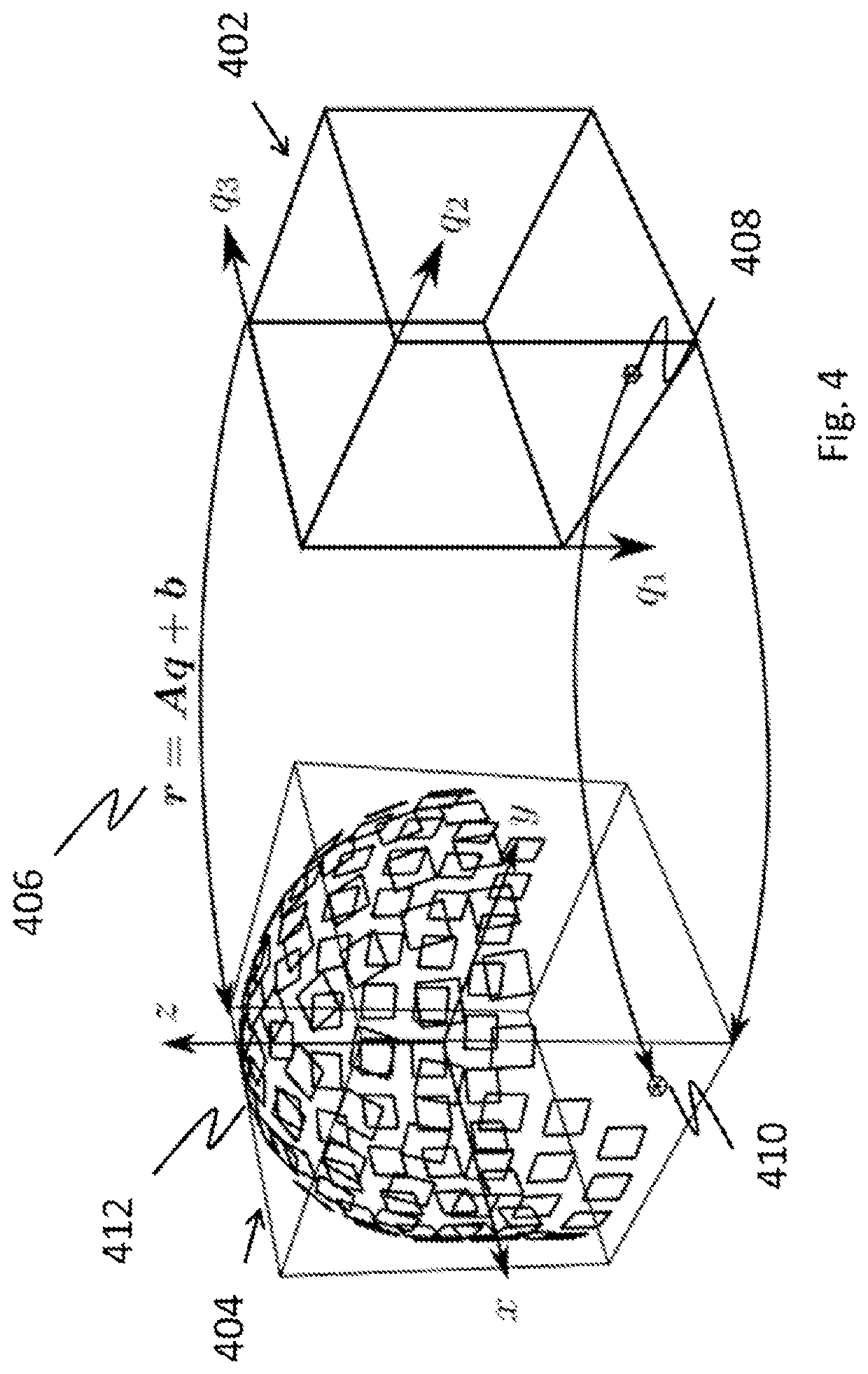Determining position of magnetic resonance data with respect to magnetic field sensors
a magnetic resonance data and magnetic field technology, applied in the direction of diagnostic recording/measuring, measurement using nmr, instruments, etc., can solve the problems of deteriorating significantly the inverse estimate, affecting the workflow, and errors in the localization of brain activity
- Summary
- Abstract
- Description
- Claims
- Application Information
AI Technical Summary
Benefits of technology
Problems solved by technology
Method used
Image
Examples
Embodiment Construction
Definitions
[0015]Magnetoencephalography (MEG): a method to localize electrical brain activity from magnetic field measurements outside the head.
[0016]Magnetic resonance imaging (MRI): a medical imaging technique to form a three-dimensional image of an object based on controlling nuclear spins in the imaged matter and measuring their magnetic field.
[0017]MRI signal: the magnetic field or a quantity related to the magnetic field of precessing nuclear spins.
[0018]Measurement sequence: a set of the magnetic field pulses affecting the spins to provide data for image reconstruction
[0019]Image reconstruction: a method for converting the magnetic field data of the spins to a three-dimensional image.
[0020]Imaging phantom or target volume: an object positioned in a field of view of MRI system. The object provides MRI signal when being measured.
[0021]Field of view: imaging volume of which the MRI image is taken by generating magnetic field gradients to the volume.
[0022]Larmor frequency: the fr...
PUM
 Login to View More
Login to View More Abstract
Description
Claims
Application Information
 Login to View More
Login to View More - R&D
- Intellectual Property
- Life Sciences
- Materials
- Tech Scout
- Unparalleled Data Quality
- Higher Quality Content
- 60% Fewer Hallucinations
Browse by: Latest US Patents, China's latest patents, Technical Efficacy Thesaurus, Application Domain, Technology Topic, Popular Technical Reports.
© 2025 PatSnap. All rights reserved.Legal|Privacy policy|Modern Slavery Act Transparency Statement|Sitemap|About US| Contact US: help@patsnap.com



